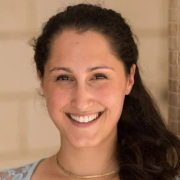

Splunk Enterprise Security and Dynatrace are competing products in cybersecurity and application performance monitoring. Dynatrace seems to hold an upper hand in providing automated real-time insights, whereas Splunk Enterprise Security offers superior comprehensive data analytics for security operations.
Features: Splunk Enterprise Security offers robust data analytics capabilities with advanced threat detection and incident management tools. It facilitates seamless integration of various data sources, providing a holistic security view. Its schema-on-read technology allows for versatile data handling, and the Search Processing Language (SPL) enables complex data manipulation. Dynatrace excels with AI-driven features, delivering automatic root cause analysis and full-stack monitoring. Its automated deployment and dynamic learning capabilities allow for comprehensive monitoring across multiple environments, enabling proactive performance optimization.
Room for Improvement: Splunk Enterprise Security could enhance its user interface to reduce the learning curve for non-specialists and automate more processes to minimize the need for manual input. Additionally, optimizing cost efficiency for smaller enterprises could broaden its market reach. Dynatrace could improve its compatibility with legacy systems to enable smoother transitions for older infrastructure. They might also consider expanding user training resources to aid in the adoption of their advanced features, making them accessible to a broader audience. Pricing transparency could also be improved to clarify cost structures for potential clients.
Ease of Deployment and Customer Service: Splunk Enterprise Security provides a flexible deployment model suitable for both on-premises and cloud environments but may require significant setup effort, potentially challenging for users without extensive technical expertise. Its customer service is supportive but often relies on vendor involvement for complex issues. Dynatrace benefits from a simplified, agent-based deployment efficient for cloud-native integrations and offers responsive customer assistance, facilitating quicker initial setup and less reliance on external support for ongoing management.
Pricing and ROI: Splunk Enterprise Security involves a substantial initial investment, with ROI dependent on the effective utilization of its comprehensive analytics capabilities. It is ideally suited for enterprises demanding deep security insights. Dynatrace provides flexible pricing models, potentially offering faster ROI by focusing on reducing operational overhead through automation. This makes it appealing to organizations prioritizing application performance speed and automation, effectively supporting both mid-sized and large enterprises with cost-effective monitoring solutions.
ROI is hard to specify; however, incidents like impending ransomware attacks highlight its value, though those are exceptional events.
Splunk's cost is justified for large environments with extensive assets.
They have a good reputation, and the support is commendable.
If you want to write your own correlation rules, it is very difficult to do, and you need Splunk's support to write new correlation rules for the SIEM tool.
The technical support for Splunk met my expectations.
If it's an enterprise, increasing the number of instances doesn’t pose problems.
It is easy to scale.
They struggle a bit with pure virtual environments, but in terms of how much they can handle, it is pretty good.
Generally, all are stable at ninety-nine point nine nine percent, but if the underlying infrastructure is not deployed correctly, stability may be problematic.
It provides a stable environment but needs to integrate with ITSM platforms to achieve better visibility.
It is very stable.
The definition of enterprise is loosely used, however, from a holistic security perspective, including infrastructure, network, ports, software, applications, transactions, and databases, there are areas lacking, especially in network monitoring tools.
Splunk Enterprise Security would benefit from a more robust rule engine to reduce false positives.
What Splunk could do better is to create an API to the standard SIEM tools, such as Microsoft Sentinel.
Data retention can be better. If we want to look at the data for five months or six months, that is not available to us. We only have a history of 20 or 30 days.
The platform requires significant financial investment and resources, making it expensive despite its comprehensive features.
I saw clients spend two million dollars a year just feeding data into the Splunk solution.
Splunk is priced higher than other solutions.
Graduation features offered by Dynatrace provide a single view and can connect with many other monitoring systems.
This capability is useful for performance monitoring and issue identification.
They have approximately 50,000 predefined correlation rules.
Splunk Enterprise Security's most valuable features are its stability and the robust Splunk Search Processing Language.




Dynatrace is an AI-powered software intelligence monitoring platform that accelerates digital transformation and simplifies cloud complexities. Dynatrace is an entirely automated full-stack solution that provides data and answers about the performance of your applications and deep insight into every transaction throughout every application, including the end-user experience. By modernizing and automating enterprise cloud operations, users can deliver an optimal digital experience with higher quality software to customers faster.
Dynatrace offers an all-in-one automated artificial intelligence solution that brings together application performance, cloud and infrastructure, and digital experience monitoring. Dynatrace accelerates performance-driven results through operations, development, and business teams with a shared metrics platform. In addition, users are provided a full-stack monitoring experience with three patented technologies:
What does Dynatrace offer?
Dynatrace redefines how organizations monitor their digital ecosystems. The solution offers:
Reviews from Real Users
Dynatrace is the only solution that provides answers to organizations based on deep insight into each user, transaction, and organization's environment.
Barry P., a managing performance engineer at Medica Health Plans, writes, "With Dynatrace, we have synthetic checks and real-user monitoring of all of our websites, places where members and providers can interact with us over the web. We monitor the response times of those with Dynatrace, and it's all integrated into one place."
A consultant at a tech service company notes, "A feature that's one of the highlights of Dynatrace is the AI. The second most valuable feature is OneAgent. Between infrastructures, applications, operating systems, you can deploy with just a single agent and can practically install and forget about it."
Splunk Enterprise Security is widely used for security operations, including threat detection, incident response, and log monitoring. It centralizes log management, offers security analytics, and ensures compliance, enhancing the overall security posture of organizations.
Companies leverage Splunk Enterprise Security to monitor endpoints, networks, and users, detecting anomalies, brute force attacks, and unauthorized access. They use it for fraud detection, machine learning, and real-time alerts within their SOCs. The platform enhances visibility and correlates data from multiple sources to identify security threats efficiently. Key features include comprehensive dashboards, excellent reporting capabilities, robust log aggregation, and flexible data ingestion. Users appreciate its SIEM capabilities, threat intelligence, risk-based alerting, and correlation searches. Highly scalable and stable, it suits multi-cloud environments, reducing alert volumes and speeding up investigations.
What are the key features?Splunk Enterprise Security is implemented across industries like finance, healthcare, and retail. Financial institutions use it for fraud detection and compliance, while healthcare organizations leverage its capabilities to safeguard patient data. Retailers deploy it to protect customer information and ensure secure transactions.
We monitor all Log Management reviews to prevent fraudulent reviews and keep review quality high. We do not post reviews by company employees or direct competitors. We validate each review for authenticity via cross-reference with LinkedIn, and personal follow-up with the reviewer when necessary.